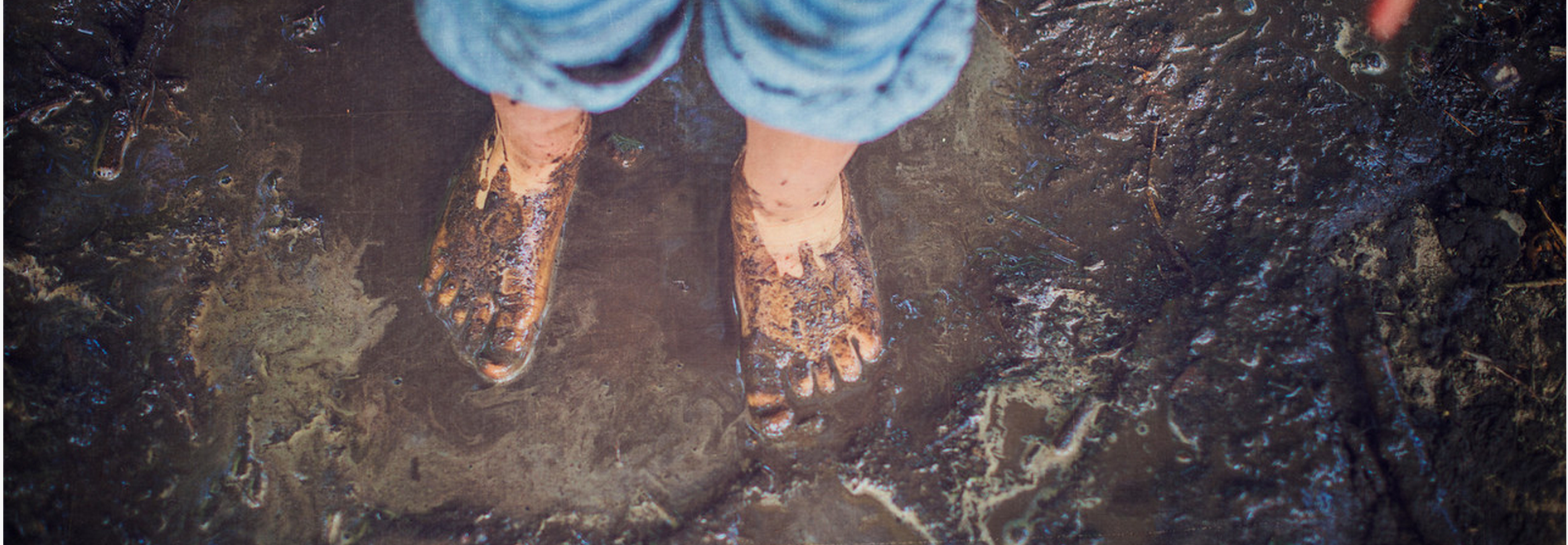Grateful Designs
-
Age: to
-
Time: 1 hour+
-
Materials: seasonally appropriate clothing, water bottle, (optional) towel or blanket to sit on
- Skills: Creativity, Sensory, Empathy
Familiar shapes catch our eye, hold our attention and can even inspire an emotional response. In fact, researchers have discovered that people all over the world experience feelings of joy when looking at and interacting with round shapes, like spirals, ovals and circles. Shapes are also sprinkled throughout the natural world, and when you spot the triangles that form in an ice puddle or the hexagons of a bee hive, something fires in your brain, and you’re hooked.
One sweet way to help attune kids to joyful shapes AND hook them on acts of kindness is to engage them in using nature treasures to make artful shapes—and to share those shapes with someone they love to spread the joy! We share this around Mother's Day as a sweet way to do create something beautiful to show Mom how much we love and feel thankful for her—or to delight anyone you love any day of the year!
This is also part of our free May Calendar. Need your copy? Download it at tinkergarten.com/calendar.
This is also part of our free May Calendar. Need your copy? Download it at tinkergarten.com/calendar.
The Guide
Plan.
Talk about who you want to honor with a gratitude design. What do you love about that person. Wouldn't it be great to create something that would spark joy in them? Did you know that shapes and designs can make us feel joy?
Hunt for shapes.
Head outside with your child and keep an eye out for shapes in nature. Point out some shapes that you see and invite your child to find their own, too. Collect some of the nature items as you hunt and invite kids to lay them out on the ground to marvel at all of the different shapes you found. Kids can even sort them into piles based on shape, color or other characteristics, too. To get your child started on making their own shapes, try some of these ideas:
Model and make shapes together.
Slowly start to form a shape without saying a word. Notice how curious your child becomes when you are so very focused. Engage your child if they want to talk or just keep making. Once they are interested and your shape is taking form, hand them an object to add and enjoy making the rest of the shape and other shapes together.
Encourage easier shapes first.
Circles or ovals are the easiest shapes for kids to make, so start with those. We love to introduce kids to spirals, especially around the winter and summer Solstice. Spirals are beautiful shapes that fascinate and remind us of the cycles and rhythms of the natural world. Squares and rectangles are a bit more challenging, but can happen if you are using linear objects like sticks.
Outline and model.
Lay down a piece of string or use sidewalk chalk to form the outline of a shape. Or, just draw a line in the dirt or sand with a stick or your finger. Then, kids can follow your outline as they place objects.
Make giant shapes of all sizes.
If you have sidewalk chalk or rope, make giant shapes that kids can not only build with objects but can interact with, move in and out of or use to spark pretend play.
Make shapes indoors.
If you aren’t able to be outdoors for a bit, gather up nature treasures and bring the shape-making indoors. Just interacting with natural objects helps kids stay connected to nature, even when the play has to move inside.
Unveil your gratitude design!
If the person for whom you've made your design is near, bring them on a walk to see it. Have fun unveiling it and letting them know that you made it for them! If they are far away, take a video or photograph and share it along with the photos of the smiles kids feel having made it with them in mind.
Share shapes, too!
Share photos of whatever shapes you and your kids create in our OutdoorsAll4 FB community using @tinkergarten to inspire other families to make joyful shapes of their own!
Why is this activity great for kids?
Recognizing and naming shapes is super helpful for kids’ future learning, not only about geometry or design but about how we use symbols to read, write and communicate. And, shapes are a tool for helping kids learn to direct and hold their focus. We can think about focus as the ability to direct and shift our attention—a skill kids need to take in and process information, collaborate, reflect, evaluate and act on their goals. Arranging objects into lines and shapes is also a special type of brain-boosting behavior that young kids all over the world engage in when they play. Engaging with familiar shapes can also spark the kind of joy that helps kids thrive. Every time kids experience joy, the pathways in their brains that are dedicated to feeling this positive emotion grow stronger. Creating joy for someone else also hooks kids on kindness—perhaps the best way to ensure they'll find joy through strong relationships!


